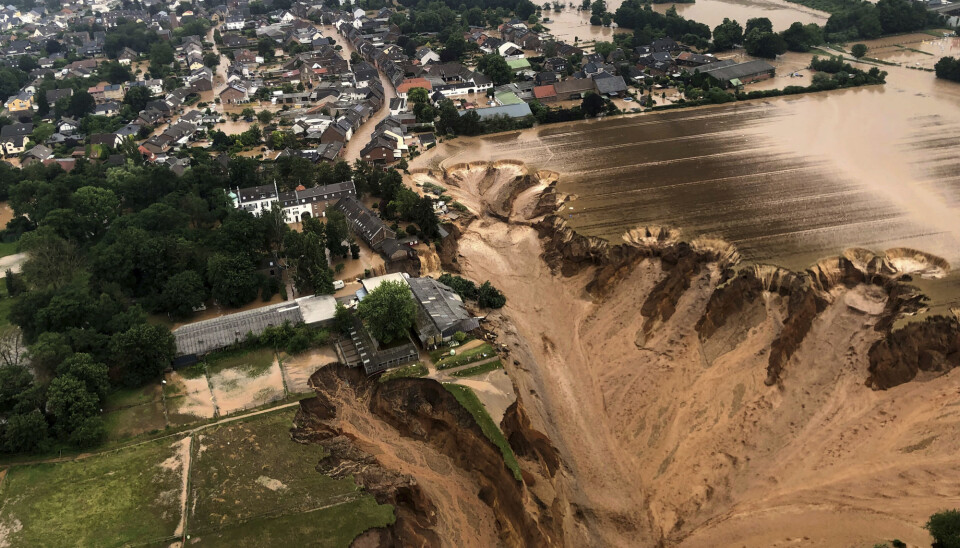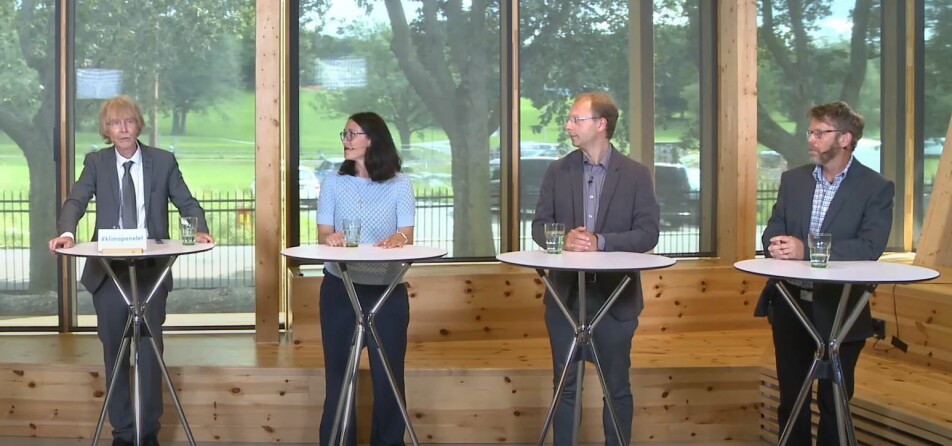
Dramatic new climate report:
Why are climate scientists so much more confident in their predictions now?
It's not just about the increase in extreme weather and higher temperatures.
The UN Climate Panel’s new report has painted an incredibly gloomy picture of our future climate.
The new report’s estimates have led to this disappointing assessment:
Even if we manage to cut emissions drastically, the Earth can still continue to heat up rapidly over the next 20 years.
“Politicians really need to know this if they want to implement an aggressive climate policy,” says Bjørn Samset to sciencenorway.no.
Samset is a researcher at Cicero, the Center for International Climate Research, and one of the Norwegian researchers who was involved in the new report.
The effect of climate cuts will not be immediately apparent, unlike the measures to which people have become accustomed for controlling the coronavirus.
But it is not just the numbers in the report that are startling. Climate scientists are also far more confident in their conclusions than they have been in the past.
Science has evolved
It is quite clear that climate change has been caused by humans, says Jan Sigurd Fuglestvedt.
He is also a Cicero researcher and one of the leaders behind the work on this report from the UN's climate panel IPCC.
The changes have become clearer since the previous main report in 2013. Researchers have measured higher temperatures and observed more extreme weather on the planet than in the past.
The actual science behind the conclusions has also evolved since the previous report.

Digital version of the Earth's climate
Among the most important tools for understanding climate change are climate models.
Ever since the 1960s, the models have increased in size and complexity and have become more accurate over time. Now they are more precise than ever before.
They are a kind of digital version of the whole Earth's climate, Samset says.
These models divide the land, the sea and the atmosphere around the globe into boxes in a grid.
You can think of each box as a pixel on a grainy photograph of the planet.
Recreates prehistoric climate
Different factors that can affect the climate are baked into the models.
“Wind, wind currents, clouds, rain, temperature, ocean currents, air pollution, and the carbon cycle between trees, the soil and sea — everything has to be represented,” says Samset.
The models are now able to replicate everything from the climate during the previous ice age to the ravages of major storms in recent times.
Clouds and methane gas
The models have become more precise because they have been refined with additional information about what and how different factors affect the climate.
These factors include aspects such as how clouds change as the Earth gets warmer. Or what happens when methane gas ends up in different areas of the atmosphere.
The effects of methane are a good example of a small change in the models that has improved them, Samset said.
It’s long been known that methane is a powerful greenhouse gas. But only in recent years have scientists been able to quantify how it behaves in different parts of the atmosphere.
“This new understanding has been included in the models and has spread through them and projections about the effects on the climate,” says Samset.
A combination of small changes have resulted in better models.
“The methods we’re using have become more powerful. It's not necessarily because we've invented revolutionary new tools. They’re the same as we used seven or eight years ago, but we have sharpened and sharpened these tools and gained more computing power,” Samset said.
More powerful computers
More powerful computers have also allowed for new kinds of calculations.
In the last five years, researchers have been able to account for the fact that weather is much more chaotic than the climate.
By running many simulations, they can test what happens when they change the weather a bit at the beginning of the calculations.
It is these calculations that allowed researchers to see how long it will take
for the effect of different climate measures to be felt.
Natural variations in ocean currents, wind, temperatures and rain are likely to obscure the effects of severe emissions cuts for around twenty years, according to estimates.
One model run takes one month
But even with today's computing power, one run with a model like the ones being used can take up to a month, Samset says.
And the models are often run 50−100 times with different conditions.
“We start at exactly the same starting point, but vary, for example, how hot it is or how strong the ocean currents are. That allows us to learn about natural weather variation,” Samset says.
Nevertheless, it’s important to note that the climate models are only an approximation of reality.
No matter how much these models are improved, they will never be a perfect representation of the Earth’s climate.
The Holy Grail for climate research
Another number in the report also was a great triumph for climate scientists.
It’s called climate sensitivity.
Simply put, climate sensitivity is about how much warmer the Earth will get as we emit more CO2.
“In a way, climate sensitivity has been the holy grail for climate research that people have really wanted to calculate with greater certainty,” said Trude Storelvmo.
Storelvmo is a professor at the University of Oslo and was involved in this section of the new climate report.
Reducing uncertainty
Specifically, climate sensitivity describes how much the temperature will increase if there is twice as much CO2 in the atmosphere.
Until now, this number has only ever been presented with very large margins of uncertainty.
In its previous report, the UN Climate Panel estimated that the sensitivity was somewhere between 1.5 to 4.5 degrees.
In the new report, the researchers have narrowed the uncertainty to somewhere between 2.5 to 4 degrees.
Their best estimate is 3 degrees.
In other words: If the amount of CO2 in the atmosphere doubles, the Earth’s average temperature will most likely increase by 3 degrees.
Cicero’s Fuglestvedt says narrowing the uncertainty on climate sensitivity is a big step forward.
Several measurements are baked into the calculation
This means that the future scenarios presented by the Climate Panel have less uncertainty associated with them than in previous reports.
The breakthrough is due to a new approach.
“Before, we used the climate models directly, but now we assess climate sensitivity based on several approaches,” says Fuglestvedt.
Different measurements and other knowledge about the climate are now baked into the computations in a new way.
Samples from ice and seabed
“One difference from the last report is that we have found new ways to combine observations and climate models,” Storelvmo said.
These observations include measurements from satellites and from land- and sea-based instruments.
The researchers were also able to incorporate information into the models about what the climate was like far in the past.
Samples from deep in the polar ice and from the seabed have revealed how cold or hot, wet or dry it was before, both during the last ice age and millions of years ago.
Self-reinforcing effects
New insights have also improved the calculations. Storelvmo describes a classic example:
When the Earth gets warmer, snow and ice melt in the polar regions.
This loss of ice means sunlight is no longer reflected away from the Earth by the white snow or ice. Instead, the energy from the sun is absorbed by the dark surface that melted out of the snow or ice.
That will make the Earth even hotter, and more ice and snow will melt.
This endless cycle, of melting snow and ice changing the amount of sunlight that is absorbed by the Earth, becomes a vicious circle that is self-reinforcing.
Pointing in the same direction
Observations and these kind of self-reinforcing effects have now been baked into the assessment of how sensitive the climate is to our emissions.
The researchers call these various pieces of information in the report “lines of evidence”.
And they point largely in the same direction.
“The different lines of evidence reinforce each other,” Storelvmo said.
At the same time, she said that researchers really want to narrow the uncertainty even more in the future.
Man-made extreme weather in Northern Europe
The new report also includes another major improvement, Fuglestvedt said.
Researchers now know much more about climate change in different regions of the world.
In Northern Europe, for example, more heat waves and more extreme precipitation have been measured than before.
This is not accidental. Researchers can now say with very high certainty that humans have contributed to these climate changes.
Several things have made it possible to say more about what is happening in each region.
There are lots more measurements, there’s been much more extreme weather and computers are more powerful, says Samset.
But there is still a lot of information missing about some parts of the world.
For example, there are far too few measurements and research on the climate in Africa, Samset said.
Translated by Nancy Bazilchuk
Read the Norwegian version of this article on forskning.no
































